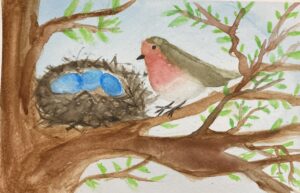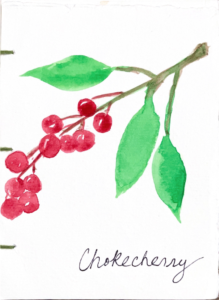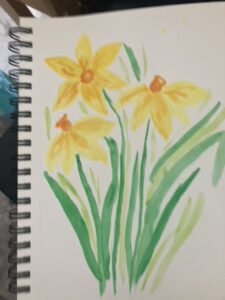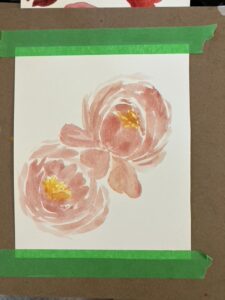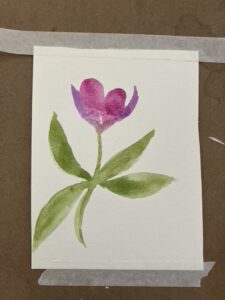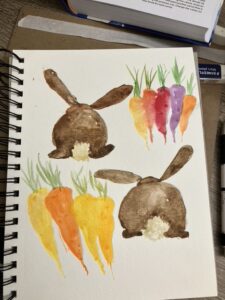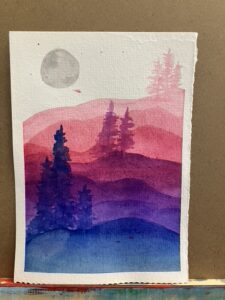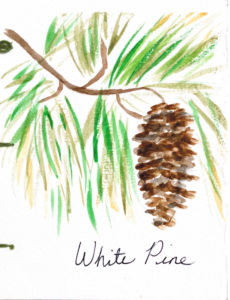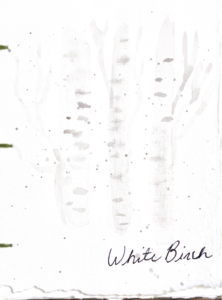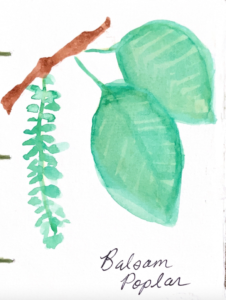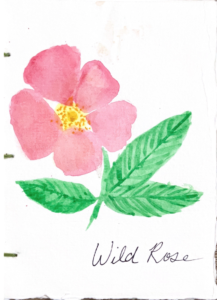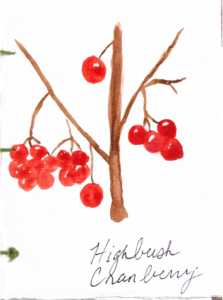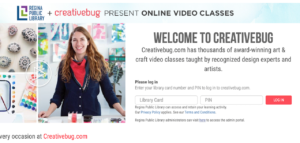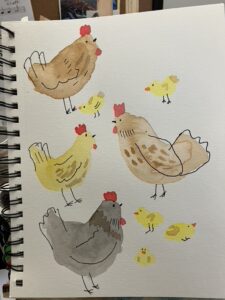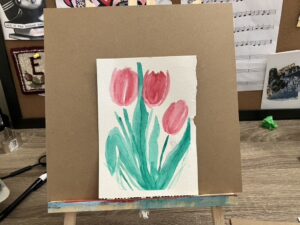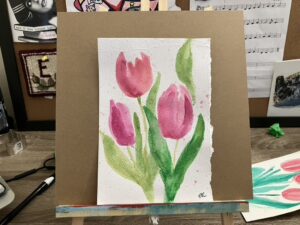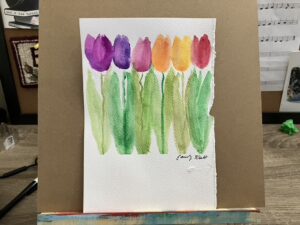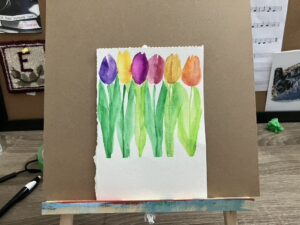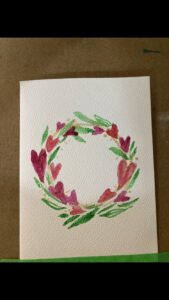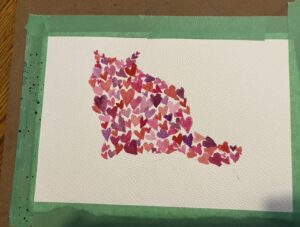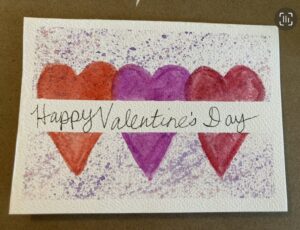Last week I did something for my online learning project that probably sounds contradictory: I bought a physical book about watercolour painting. Specifically, I bought this one: 15 Minute Art Watercolour: Learn to Paint in Six Steps or Less by Jola Sopek.
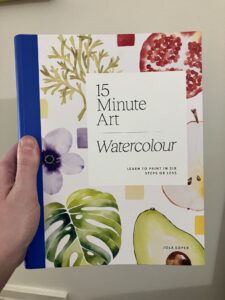
Betrayed the internet by purchasing a book
Throughout this learning project, I’ve become very immersed in the world of digital art education. That’s the point of this assignment: to learn something online, and I’ve been doing that fairly successfully. As I learned online, however, I became curious about how learning watercolour painting online might be different than learning it from more traditional resources like print books, and vice versa. Is one more effective than the other? Enjoyable? Accessible? I thought it would be interesting to investigate these questions, so I picked up a book and a paintbrush and went to town. Keep reading for my thoughts about the ultimate EDTC 300 SmackDown: Books vs the Internet!
Is the internet the win-internet?
Here are some things I really like about learning watercolour online:
- Variety: There’s an almost infinite variety of resources available to learn from – anything you want to learn how to paint, there’s probably someone online who can teach you how.
- Visuals: As watercolour is a visual medium, it’s helpful to actually watch someone paint so you can imitate brushstrokes, amount of paint used, etc. rather than going off a written description.
- Speed: With a few clicks and a Google search, I can find learning resources in seconds, which is definitely convenient.
- Cost: Unlike in-person art lessons or the book that I bought, many online resources are available for free (and I am very broke).
Now here’s some stuff I don’t like about learning online::
- Overwhelming: While variety is good, sometimes the sheer amount of online content makes it difficult to know which resources to choose.
- Distractions: Sure, there are watercolour tutorials online. You know what else there is? Literally everything. When I go to find a painting lesson on my phone, I often get distracted by all the other things that are also on my phone, which takes away from learning time.
- Comparison: It’s hard not to compare yourself to others when comparison is basically the defining feature of social media.
- Batteries: I am lazy and often forget to plug in my electronics before the batteries die, meaning there are times when I go to paint and discover I need to wait for my computer to charge instead.
The Benefits of Books
I’ll be honest: I am a book girly at heart. Given the choice between an ebook and a battered paperback, I will choose the paperback. Every. Single. Time. Digital resources are great, but sometimes they feel overwhelming to me. This might be exacerbated because I have ADHD and am prone to being overwhelmed in general, but the internet is just A Lot. Everything’s connected, there’s always another distraction, link, video, meme.
Here are the good things about book learnin’:
- Calm: Learning from a book was much calmer and less distracting than learning online. It was nice to disconnect and just spend some time doing art without looking at a screen.
- Review: It was also nice to easily go back and review instructions without having to hit pause, rewind, and play a million times like I would need to do with a video. Having static reference images made it easier to pick out details of a technique or image.
- Comparison: No one to compare myself to other than the person who made the art in the book, instead of the entire internet.
- Music: I could play music in the background while I worked instead of the audio on a video tutorial.
- Permanence: Because I bought the watercolour book, it’s something that I can keep in my library forever (baring a fire or something) and reference whenever I want.
And the bad:
- Cost: Unless you borrow a book from the library, books cost money. 15 Minute Art Watercolour cost me like $40, which isn’t cheap.
- Spills: Watercolours usually involve, well…water, which can spill and ruin a paper book.
- Classroom: As an arts ed major, I’m always thinking about how I could use my own learning resources in a professional capacity. Books can be less useful in a classroom setting than a video. Videos are easier to share with students and aren’t bound by the same reproduction limitations as print resources.
And the new heavyweight champion of the watercolour world is…
I know I promised you a smackdown, but the real answer is: no one wins! Or maybe, everyone wins! Depends on your point of view. My honest thoughts are: online resources and print resources both have their pros and cons, but mostly I’m grateful to live in 2024 where I can easily access both. You get the best of both worlds, just like Hannah Montana said you could.
